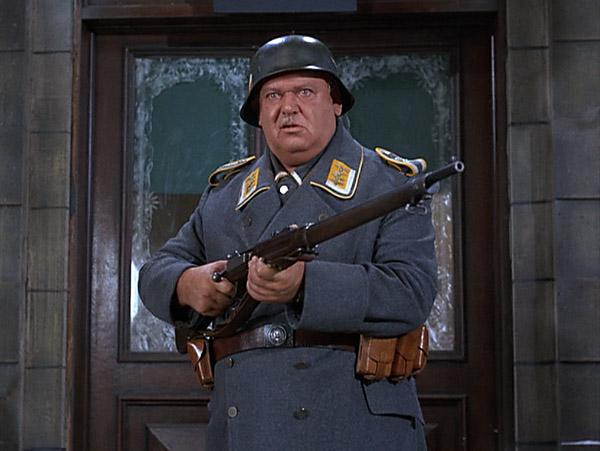Fangz posted:As I understand it, it's not really a racism thing, more a matter of ships picking up workers in the British colony of Hong Kong (and previously, Singapore) who were already doing laundrying stuff for the fleet based there. I'm also not sure about this being a "centuries old tradition", since dedicated laundries in ships were only ordered by the admiralty in the 1950s. Woe to the goons in the thread, suckered like a Brexiteer voter who's sole source is facebook.
|
|
|
|
|

|
| # ? Jun 3, 2024 17:14 |
|
It always comes back to loving Serco lol
|
|
|
MikeCrotch posted:It always comes back to loving Serco lol Wow, prior to our present NHS woes these were the dudes who mismanged hospitals comically bad where I lived back in 2013.
|
|
|
|
|
MikeCrotch posted:It always comes back to loving Serco lol it seems to have something to do with military history, so would you mind elaborating
|
|
|
|
You want some context. My father doing the last decade of his security work was part of a group they contracted to take care of one of the Hospitals in Cornwall back in 2013 and apparently they were so cheap with their cleaning staff they refused to give them the proper stuff you need to clean a modern hospital and insisted they could do most cleaning with the basics of soap and water.
|
|
|
|
|
ChubbyChecker posted:it seems to have something to do with military history, so would you mind elaborating Serco and G4S are the lovely companies that basically everything is outsourced to these days. For reference, G4S were the security company who did so badly at managing security for the 2012 London Olympics that the army had to be drafted in. They are still one of the most important companies in the UK to this day
|
|
|
|
ChubbyChecker posted:it seems to have something to do with military history, so would you mind elaborating More military present than military history. Without being too directly political, Serco is one of the big management companies (along with Capita, G4S and Babcock) to which the British state has been outsourcing more and more of its services and management since the 1980s. Collectively their record is - to be very charitable - 'patchy' (as is that for the bits of the state responsible for drawing up the contracts to these companies and overseeing them). There is a tendency for these companies to win contracts by putting in very low bids which then prove to be impossible to deliver, which often ends up with an inferior product or service delivered at greater cost (either outright or once the delays, inadequacies, workarounds, 11th-hour re-planning and contract re-drafting are accounted for) than it was when it was in-house. With the MoD (and other government departments) so stripped of the means to both deliver and administer these sorts of services after 40-odd years of outsourcing, there is almost no alternative but to employ one one of these firms. With only four big ones it is effectively an oligopoly: Serco will mess up delivery and have its contract withdrawn, Babcock will put in a low bid for the re-tendered contract which, due to lack of civil service resources to properly analyse it, will be accepted. After a few years Babcock will have made no improvement or made things worse, so G4S will get a turn. Then Capita. Then Serco again. Have a look at Serco's wikipedia page for an overview of exactly how many fingers they have in so many government pies and how many scandals have resulted. That's why "it always comes back to loving Serco." Vague MilHist content: Serco's origins were as the division of RCA which supplied and maintained film/sound equipment for British cinemas in the 1930s. In WW2 it was called on to use its products to build early forms of battle simulator for military training, as well as distributing training films and the projection equipment. Then they moved into making radar and aviation radio equipment. The post-war government was so skint that they began paying RCA Services (as it them was) to not only equip its radar stations but to maintain them...and here we are.
|
|
|
|
BalloonFish posted:More military present than military history. Without being too directly political, Serco is one of the big management companies (along with Capita, G4S and Babcock) to which the British state has been outsourcing more and more of its services and management since the 1980s. Collectively their record is - to be very charitable - 'patchy' (as is that for the bits of the state responsible for drawing up the contracts to these companies and overseeing them). There is a tendency for these companies to win contracts by putting in very low bids which then prove to be impossible to deliver, which often ends up with an inferior product or service delivered at greater cost (either outright or once the delays, inadequacies, workarounds, 11th-hour re-planning and contract re-drafting are accounted for) than it was when it was in-house.  so outsourcing works the same everywhere
|
|
|
|
MikeCrotch posted:Serco and G4S are the lovely companies that basically everything is outsourced to these days. Oh, those loving monsters. G4S run basically every unsavory or murderous hustle for pay there is, from Israeli holding jails where minors are tortured, to shooting women trying to access their ancestral water sources because Pepsi bought it last week.
|
|
|
|
serco were running Australia's
|
|
|
|
Doesn’t the Royal navy have junior officers???
|
|
|
|
Sick of those highfalutin' Lockmart contractors with their fussy quality standards and their overdeveloped sense of morals? Serco can help! They got kicked out of NZ's largest prison a while back
|
|
|
|
Happy St. Crispin's Day, to those who celebrate. Those who don't shall think themselves accurss'd!
|
|
|
|
zoux posted:Happy St. Crispin's Day, to those who celebrate. Those who don't shall think themselves accurss'd! Credence granted to whatever belief system that's from. I got my 6 month car insurance bill today and yes I'm accursed.
|
|
|
|
Cythereal posted:Credence granted to whatever belief system that's from. I got my 6 month car insurance bill today and yes I'm accursed. https://www.youtube.com/watch?v=A-yZNMWFqvM
|
|
|
|
Hey this guy copied me
|
|
|
|
No no no you gotta post the one from X-Men 3 that Kelsey Grammar clearly insisted doing because he wanted to show off and they didn't actually put in the movie because it's wildly out of place https://www.youtube.com/watch?v=vvHW1oIKUxI The other actors looking around like "WTF" makes me hope that this was not planned, he just started doing it and they left the cameras on.
|
|
|
|
When the USAAF resumed bombing in early 1944 under Doolittle, how quickly did it become apparent that the Luftwaffe was hosed? What were the contemporary reactions from pilots on either side about the change in doctrine, was it a gradual realization or more like flipping a switch? How much had the Luftwaffe fought the Merlin P-51s prior to 1944?
zoux fucked around with this message at 03:26 on Oct 26, 2023 |
|
|
|
So I was recently introduced to the best rifle ever made. Made by Denmark until Norway took over and made it into a sniper. Behold perfection:   Same series, Norwegian adaptation: 
|
|
|
|
The Krag-Jorgenson (which, unless I'm mistaken, that is) was adopted by the US Army as their first repeater before being found lacking in the war with Spain. It was replaced by the Mauser-clone M1903.
|
|
|
|
|
SerthVarnee posted:So I was recently introduced to the best rifle ever made. Made by Denmark until Norway took over and made it into a sniper. It has the best reload system ever invented, consisting of "pour the rounds in" https://www.youtube.com/watch?v=S5ycG87H1b8 Gnoman posted:The Krag-Jorgenson (which, unless I'm mistaken, that is) was adopted by the US Army as their first repeater before being found lacking in the war with Spain. It was replaced by the Mauser-clone M1903. Going to assume the krag was actually fine, and the US army had a bunch of other problems that's easier to blame on a rifle.
|
|
|
|
Xakura posted:It has the best reload system ever invented, consisting of "pour the rounds in" Nah the Krag actually had deficiencies. It's slow to reload compared to a stripper clip design. The action is relatively weak, and 7mm caliber rounds designed for Mauser actions out-shot it. When the Army tried to make a hotter .30-40, they had trouble with the actions breaking.
|
|
|
|
KYOON GRIFFEY JR posted:Nah the Krag actually had deficiencies. 
|
|
|
|
https://twitter.com/washingtonpost/status/1717632621109231903 Adios mofo
|
|
|
|
That's loving fantastic. Just 
|
|
|
|
zoux posted:When the USAAF resumed bombing in early 1944 under Doolittle, how quickly did it become apparent that the Luftwaffe was hosed? What were the contemporary reactions from pilots on either side about the change in doctrine, was it a gradual realization or more like flipping a switch? How much had the Luftwaffe fought the Merlin P-51s prior to 1944? I am by no means an expert on this, but since this question is hanging I'll give what I hope is at least a basic answer. When Doolittle took the 8th Air Force back to long-range bombing missions in early 1944 he had two key developments; the availability of long-range Merlin-powered P51s able to escort the bombers well into Germany and back and his tactical shift of letting escorts sweep ahead of bomber formations rather than guarding them in close escort. When Operation Argument ('Big Week') kicked off in March, the Allied missions still encountered strong resistance. But it was resistance in the form of Bf110 heavy fighters and Fw190s laden with cannons, rockets and armour to hit unaccompanied bombers over Berlin (their escorts - P47s and P38s - having had to turn back or be extremely conservative with their remaining fuel). The P51s were devastatingly effective against these relatively sluggish heavy fighters. The bombers were targeting German aircraft factories and the P47s that turned back from escort duties were strafing airfields as they went home. Once the bombers had dropped their payload and turned back, most of the P51s could also go down low, often hitting defending fighters that had avoided them at high altitude as they returned to their bases low on altitude, speed and fuel. These were P51Cs - the first Packard-powered production model which flew their first long escort missions in mid January 1944. So the Luftwaffe would have had very little encounter with them before Big Week. During Big Week the Luftwaffe was still a formidable opponent. Allied losses were heavy, especially on the early raids on and around Berlin. But Doolittle's strategy was exactly that - to force the Luftwaffe up into direct action. The Allies could ultimately make good their losses. Germany could not. Most crucial were the lost pilots; Big Week turned the Luftwaffe's aircrew shortage (which had been affecting it since the summer of 1940) from a limiting factor to severe operational hindrance. The presence of capable and free-roaming escorts over Berlin forced the Luftwaffe (and the German aircraft industry) to change approach while being on the back foot and wrestling with shortfalls in manpower and fuel, disrupted production and frequently-attacked airfields. Big Week wasn't a cakewalk against a weakened enemy. And it wasn't a knockout blow. But it was the tipping point - it freed the Allies from some important tactical and strategical limits and imposed them on the Luftwaffe. From then on the Allies were on the road to air superiority - by D-Day, eleven weeks after Big Week, the Luftwaffe was able to put only two fighters over the beaches on D-Day and the transport aircraft that dropped paratroopers behind them on and around that day were unopposed.
|
|
|
|
It's interesting to contrast with this one, even just the difference in what the camera does. https://www.youtube.com/watch?v=qk_rPHoSc8w
|
|
|
|
i googled a bit but it's hard to find a definitive answer. pre-dread naval warfare q: i understand that sighting rounds during the attempt to find a straddle/bracket, esp over visual sights before directors, was difficult, doubly so when multiple ships were firing at the same target. i read something about some ships using dye packets in their guns to ensure they knew whos shots were whos. anyone know when that practice started? and any other info people can share about how to sight in gun ranges in the pre-dread/very early dread era (thinking 1890 to tsushima). primitive fire control methods ae very interesting to me
|
|
|
|
Phanatic posted:It's interesting to contrast with this one, even just the difference in what the camera does. That speech and having a good take on it has been a major part of the training of every classically trained male actor for 300 years. (English speaking) It’s a Very Big Deal. Up there with with the Hamlet soliloquies, and waaaaay above piddly poo poo like Shylock’s “if you prick me, do I not bleed” speech.
|
|
|
|
hot cocoa on the couch posted:i googled a bit but it's hard to find a definitive answer. pre-dread naval warfare q: i understand that sighting rounds during the attempt to find a straddle/bracket, esp over visual sights before directors, was difficult, doubly so when multiple ships were firing at the same target. i read something about some ships using dye packets in their guns to ensure they knew whos shots were whos. anyone know when that practice started? and any other info people can share about how to sight in gun ranges in the pre-dread/very early dread era (thinking 1890 to tsushima). primitive fire control methods ae very interesting to me The first workable rangefinder was suggested in 1855. This was the 'stadimeter', which used the known height of a mast on the target to measure the range; the inverse could be done using a mast of known height on the firing ship, and measuring the depth of the target below the horizon. Neither of these methods were particularly effective. In the 1880s, a numberr of telescopic rangefinders were suggested. Most of these were two-man designs, with two operators widely separated along the length of the ship. By measuring the different angles to the target seen by the two operators, the range could be calculated - but this relied on close communication between the two operators, which wasn't always practical. In the 1890s, effective rangefinders started to become available. In 1888, the British company of Barr & Stroud introduced the coincidence rangefinder, which won British trials in 1892. This had a single tube, with mirrors and lenses at either end, producing a split image. Half the target was seen through one end of the tube, the other half from the other. By lining up the two halves of the image, the range could be derived. The German Zeiss company, meanwhile, introduced a stereoscopic rangefinder in 1893. This was similar to the coincidence rangefinder in external design, but produced a single apparently 3-D image. By moving a marker through the image until it appeared at the same place as the target, the range could be read off. However, this wouldn't see naval service until after Tsushima. Both designs were widely used until well into the 20th Century. The big problem in the 1890s-1900s was transmitting the range to the guns quickly enough. The British had developed electrical systems for this, which they had sold to the Japanese, but they hadn't been fitted to every Japanese ship. Instead, they might have to rely on passing it by voice; better than nothing, but slow and prone to mistakes. The Russians had a centralised director system, which they had been developing since 1872 - but lacked effective rangefinders, using mostly stadimetric ones. There were three other big pre-Tsushima developments in naval gunnery, at least from the RN's perspective. In 1898, Captain Percy Scott of HMS Scylla developed a new technique for, in effect, stabilising guns. Before this, the guns were kept at the appropriate elevation, and fired as the target crossed the sights, or at a constant point in the ship's roll - at the top or bottom of it. Under Scott's new system, called 'continuous aim', the guns were elevated and depressed to keep the guns constantly on target. This effectively cancelled out the effect of roll, making gunnery much more accurate and allowing gunfire to be effective at longer ranges. However, it was only practical with smaller guns, below 9.2in, until the development of powerful and responsive hydraulic machinery for elevating heavy guns in the 1910s. The next development was an early mechanical fire control calculator, invented by Lieutenant John Dumaresq in 1902. Dumaresq designed a simplified mechanical version of an engagement between two ships. Two bars represented the firing ship and the target, with the target bar being pointed along the target's course. Pins on the bars could be moved to represent the ship's speeds. Then, a dial could be turned to put a third bar along the line of sight between the two ships. This pointed to the appropriate deflection and the rate of change of the range to the target (range rate). The calculator, soon named after Dumaresq, was only one part of an effective fire control system. It needed to convert the range rate to a range. This was done using the Vickers clock, a clock which could be set to rotate at the appropriate rate, and would then point to the correct range. This was developed in 1904, trialled in 1905 and entered service in 1906. Dye packs, meanwhile, were more of an interwar concept. The USN produced them from 1928, and used them in 1930. Most other navies copied this in the following years. The French did so in 1936, with a variant that could also colour hits. The British could copy the French design after the start of WWII, while the Japanese introduced dye packs in 1941.
|
|
|
|
I'll just add that the French dye marking technique put a small impact-fused charge to splatter the dye. Very handy, since a penetrating hit could do great damage but an observer would have no idea where the hit was or even if there was a hit.
|
|
|
|
fascinating, very informative, thank you!
|
|
|
Randomcheese3 posted:Dye packs, meanwhile, were more of an interwar concept. The USN produced them from 1928, and used them in 1930. Most other navies copied this in the following years. The French did so in 1936, with a variant that could also colour hits. The British could copy the French design after the start of WWII, while the Japanese introduced dye packs in 1941.
|
|
|
|
|
DTurtle posted:Any idea why dye packs were such a late development? Because it's not enough to put dye in the shell. Armour piercing warship shells are not designed to explode immediately on impact, but to leave time to get through the armour. This means when they hit water they can go a ways into the water before exploding. You need basically a way to disperse the dye into the water around the shell before the shell explosion itself lifts the dyed water into the air, and you need to do it without interfering with the destructive and ballistic characteristics of the shell. For e.g. the French and British shells, this involved a small secondary explosive in the ballistic cap that would trigger on a water hit. The US used a different technology involving vents where water would be rammed into the dye. The Japanese wanted to have diving shells, so that might have made things even more complicated.
|
|
|
|
I read reports of a British Sherman commander with a Barr & Stroud rangefinder standing on the roof of his tank and directing fire at something like 3000 yards.
|
|
|
|
Jesus all the completely unnecessary edits in this completely undermine the rhythm of the language and the performance while adding nothing. It’s infuriating.
|
|
|
|
Here, have some professionals. https://www.youtube.com/watch?v=UOouofFFrZE
|
|
|
|
SerthVarnee posted:So I was recently introduced to the best rifle ever made. Made by Denmark until Norway took over and made it into a sniper. I've never seen a "sniper" model of the Krag. Pics?
|
|
|
|
Apparently that last pic is the sniper variant. Edit: found it for you.  I'm loving the bayonet attachment to a sniper rifle. Really cements the level of confidence they have in that thing performing at range. SerthVarnee fucked around with this message at 20:40 on Oct 30, 2023 |
|
|
|

|
| # ? Jun 3, 2024 17:14 |
|

|
|
|












































